VID104 Amazing Execs – Time Cabot V4
INDEX and TIMELINE
[00:00:00] David Rosen: Hello. Thank you for being here today, Tim
[00:00:02] Tim Cabot: David. Thank you for having me.
[00:00:04] David Rosen: So tell us about yourself. Tell us about what you’re engaged in. What keeps you going here?
[00:00:10] Tim Cabot: Thank you.
[00:00:11] Tim Cabot – President of Katahdin Industries, Chairman of Southworth International and Board Member of Community Resources For Justice (Non-Profit)
[00:00:11] Tim Cabot: So my two primary activities in the for-profit world are I’m the President of Katahdin Industries Inc.
[00:00:19] It’s a platform company that focuses on coating and the application of coatings onto medical devices located here in Massachusetts. And it’s a company that I’ve been involved with for the past 17 years, building it up both organically and also through a number of acquisitions.
[00:00:36] In addition to my work at Katahdin, I’ve also been fortunate enough to be involved in a family company called Southworth International Group. Southworth is a large. Provider of equipment for the material handling industry? It is located both here in the US and it has overseas operations as well.
[00:00:56] So it’s a sort of a global company. In that role, I’m a chairman of the board and I’ve been involved with it for approximately the same amount of time since about 2008.
[00:01:06] David Rosen: Do you have other board roles as well, currently or in the past?
[00:01:10] Tim Cabot: The other current role I have is I’m the the chair of the finance committee of a not-for-profit located here in Boston called Community Resources for Justice.
[00:01:20] It’s about a 70 million non-profit focused on the developmentally disabled as well as people leaving the prison system and reestablishing connections into the world.
[00:01:31] David Rosen: Can you talk about your primary roles? So you’re the chairman of Southworth, and let’s start off more with your operating roles if we can. How do you apply your time between them?
[00:01:43] Turning the Career Journey into an Acquisition Opportunity
[00:01:43] Tim Cabot: Sure. Katahdin has a couple of different businesses within the group. It’s primarily a service business.
[00:01:51] We work in the medical device supply chain, performing the manufacturing steps that require coating application. And so we have a couple of different technology platforms that we operate. But suffice it that we work with the customer to define the process and the coating and so forth to be applied to their products.
[00:02:12] We receive their products and then we undertake the coating and send it back to them. That said we also have, within the group, some element of selling actually finished formulated product, as well as licensing intellectual property. And in certain cases we also provide supply chain Solutions where we sell components, usually working with the oem to simplify their supply chain.
[00:02:39] Instead of having them source all of the substrates that we end up coating we actually buy those substrates and then coat them and then sell ’em a more of an intermediate product. So that’s the nature of the business. We have a couple of different locations here in New England.
[00:02:53] We just opened up a few years ago an operation in Costa Rica. And I spend about 60% of my time working on Katahdin ‘s activities, although I’m sure you’re aware and I’m sure everybody who’s listening to this is that, time is rather fungible these days. Both because a lot of us are able to work More or less continuously.
[00:03:12] But that’s my that’s my, my, certainly my primary activity. And it’s, it tends to surge at different times depending on some of the areas that I get more directly involved in. The challenges in that business are very much like the ones that many of the companies that you’ll be familiar with are facing right now, which is to say, we’ve had covid, we’ve had supply chain challenges we’ve had shifting demand as customers are trying to figure out what their inventories need to be.
[00:03:38] And we to some degree, also have to deal with the the longer term issues, which is the medical device industry’s consolidating. But on the other hand, you have new entrants. So there’s a lot of focus that needs to be spent on where you participating, who are you participating with?
[00:03:56] How do you keep those relationships fresh and growing? How do you continue to build new platforms with your existing customers and so forth? Some of that includes additional m and a work. And this past September we acquired a company here in Bedford, Massachusetts that focuses on hardening of implants using a so for orthopedic type operations using a technology called ion impregnation.
[00:04:21] And and we continue to look at other things in, in, that are in adjacencies or which would be complimentary to our business and our business model. About 30% of my time, I would say, is spent on south Worth international. There. It’s much more around, the capital structure of a family business can oftentimes be different.
[00:04:40] Where in the case of Katahdin, you have institutional investors. You have who are on, pretty well defined investment cycles that you need to work within family company can be a little bit different. Oftentimes you’re dealing with longer term shareholders issues or family ownership dynamics you’re dealing with the issues between advisory.
[00:05:01] And type boards and fiduciary type boards and who you’re representing whether it’s the current shareholders, whether it’s the expected beneficiaries, those are a lot of different dynamics that are going on there. But nonetheless, there’s also many of the operational issues the same.
[00:05:16] And in that case the issue is just to try and bring together a group of experienced and and highly skilled board members to help the company navigate the challenges that it faces and position itself for for growth and to understand and be able to assess that growth.
[00:05:31] And where were the areas that we can continue to tighten up and improve our execution to allow this company that’s, it’s a, it’s about a hundred and. 30 years old, how do you get it to the next generation? How do you continue to attract talent, shareholder interest, and so forth to be able to propagate it for the future.
[00:05:51] David Rosen: And, I’d like to actually come back to this a little bit more in, in a strategy discussion with you. But it, and it’s, it sounds like a great experience. I’d love to know more about the, are, is your next generation even going to participate at the level of your current generation and how is that affecting it?
[00:06:08] But let’s start off, I’d really love to hear Tim, because you have such a great the diversity of roles and. I’d like to hear about the journey on how you got here and what did you do to keep I know at some point in time you were also the lead president of a business unit or managing director of a business unit.
[00:06:28] Tell us about your personal journey of where you’ve come from, because I, in the previous conversations we’ve had, I’ve always had a great respect for your balance as well as a leader, not only as a, an effective business leader, but also the fact that you balance your life a little bit as well, which is important.
[00:06:45] Where Tim’s Career Journey Began
[00:06:45] Tim Cabot: Let me start by saying, some people may dispute that point, David, so but see that as it may. So my journey was one of I, like most people, started work pretty much right outta school. And but my journey was I wanted to work overseas. And I got involved in the chemical industry.
[00:07:00] I hadn’t really spent a lot of time thinking about it, but it got me down to South America. I’d been interested in the political situation in South America when I was studying. And I was interested in going back and spending some time and we had some family history that had been done in South America prior times.
[00:07:17] But that got me interested in working in a or it got me involved in a chemical manufacturing with the global manufacturing of intermediate chemical materials that are used across a range of industries. And it turned out that they had growth ambitions, but they really didn’t have a lot of marketing skills..
[00:07:35] It was more of an type of an engineering and product type company. And so there was an opening there and I ended up being able to advance my career in the company for. A little over 10 years and ended up by the time I left running some global business units that were focused on some of the very specialty applications for the products that we manufactured.
[00:07:56] And looking at what those market requirements were, where were there opportunities for growth and for margin expansion and so forth. And as and then how that needed to translate into what products and sales execution strategies we needed to have to be able to continue to build those out.
[00:08:13] I’m, I’m proud that the work that we did all those years ago continues to pay out very good results for the company. These are some of the highest margin most lucrative reoccurring sources of revenue within the business. And it set me up to think a little bit about how do you think about taking.
[00:08:33] Somewhat commodity type technologies and products and focus those into markets that are, have good fundamentals. And then over a period of time, how do you start to differentiate yourself through either product or service or some other attribute that allows you to start to command more of a premium for your participation.
[00:09:00] And at the same time, how do you secure your business so that you’re not just, at risk of whatever the next RFP is for, for what you do. And so back in 2000 and six when I I identified a it was a company Katahdin that had seen better days to say the least.
[00:09:20] But where I saw some opportunities through a if one rolled up on sleeves and got involved to grow it. And my partner Bob Ds and I bought the company. It was there was, we went through all of the stages of turnaround to growth and it’s been a fun.
[00:09:35] David Rosen: What size was Katahdin when you found it and where is it today in anything you can share?
[00:09:43] How the Katahdin Business Grew from $9M to $50 Million
[00:09:43] David Rosen: Sure. Yeah, it was in the eight to $9 million range when we bought it. And now we’re getting closer to 50. And so it’s it’s been a very positive growth arena.
[00:09:55] But I think what we, what it also part of that is that, we certainly de marketed a lot of business in order to focus on those areas that are Are we felt that it had the most long term strategic value because one of the, revenue is something everyone looks at and about how, we all understand that.
[00:10:14] But what typically drives valuation is, your your margins and your especially your profitability. And that’s the area I think we’ve been able to do a lot. It’s a little bit below the surface, we’ve for some of our businesses we’ve been able to double the gross margin.
[00:10:30] And there’s been a big, especially as you start to scale the profitability of the group has certainly improved over the years. But quite consider.
[00:10:37] Can you talk about some of the tools and some of the things that you did to increase the profitability and increase the margins of a business?
[00:10:46] That sounds like it was a little stagnant at the time and it was really stuck at a low state, at an early stage.
[00:10:53] Tim Cabot: Yeah, so in, so the business has a couple of different platforms. We I mean there’s some technology platforms. And so each one of them had a slightly different path path to get it to perform.
[00:11:06] We, we deposited floro polymer coatings onto Guidewire and core wires and other types of medical devices, single use medical devices that are used in in minimally invasive type surgical procedures. And that was a small part of a business, when we bought it, less than 40%. . And so in that business there were the two primary growth strategies or business strategies that we executed on.
[00:11:34] Our one is to focus on the medical interventional devices as our core business. And de marketed a lot of other things along the way. Built up facilities that were specialized medical grade facilities and we invested heavily in automation to try and improve both our cost structure, but also be able to give our customers the confidence that the product we’re gonna be made consistently over time.
[00:12:01] Whether it was seasonal consistency, employee consistency, it didn’t really matter. We need to make the most consistent products. The third Piece of that was also to follow the customers to where they operated. Although these products are quite you can fit a lot into a tube and you can ship that tube by overnight.
[00:12:18] We felt that we needed to open up facilities closer to where our customers were growing. So that’s what caused us to open a facility in Costa Rica. And then the third piece, or the fourth piece is we staffed the company with people who came outta the medical device industry, who really understood all of our customer requirements and could talk with our customers at the level our customers needed in order for them to see that we were not like the other people in the industry.
[00:12:43] So that meant that we basically had to turn over the whole management team over a period of time. At the same time, maintain that core competency. Being able to provide the services that we were known for. So there was a little bit of a challenge there. The other big part of the business is on the the an of aluminum side of the world, as I’m sure everyone who’s on this call knows, an aluminum is a pretty traditional bog standard type process.
[00:13:07] And the key there was coming up with new technology and specifically we worked on and and have now issued many patents around how do you anize an article that can withstand the cleaning and sterilization requirements that are gonna need it for that product then to be used in a, in the following, and to use again and again.
[00:13:29] And so we came up with this technology through a lot of hard work and some very smart and talented people. And now that is the standard in the industry for if you have a A drill or a a saw or typically to orthopedic. It can also be endoscopic, but these are all the sort of the aluminum equipment that is used and then has to be prepared for the next operation through, pretty vigorous cleaning sterilization.
[00:13:55] And because of that, now we have this, very, where we work on the most premium products in the industry, and that’s a great intellectual property intellectual property portfolio as well. So a little bit different depending, obviously on the business, but those were the, some of the most basic strategies at a high level.
[00:14:10] David Rosen: Really informative because a lot of people don’t recognize that sometimes the Minor portions of the business may have greater growth opportunities and therefore could be, you may need to switch your thinking and prioritization to focus on one of the businesses. And what did you do with the other parts of the business that weren’t as much of a priority?
[00:14:33] Focus on Growth and Managing Lower Priorities that Turn Into Opportunities
[00:14:33] Tim Cabot: Let me start by saying that’s one of the hardest questions sometimes that we all have to deal with is how do you get rid of customers who don’t meet your requirements. Generally speaking, we all are looking for revenue because most businesses have relatively fixed overheads and it’s very hard to give up a customer who’s meeting your overhead requirements.
[00:14:59] And so a lot of people, including ourselves, myself, were, it wasn’t as though this was something we, we leap at because we needed to generate a lot of cash in order to complete the rest of our strategy of upgrading facilities, upgrading the organization, investing in automation, new intellectual property, all those cost money.
[00:15:19] So it’s a real, very good question David. And I think the answer is that the simplest way of doing it is to continue to increase prices until your customers walk on those areas that are not strategic. And because what you learn is what value you have to them. In some cases we thought we would de market a business, and we realized that our customers in this one industry segment in fact, really needed us.
[00:15:46] We didn’t understand how important we were to them or how hard it was gonna be for them to change and how essential we were to their end result. And once we got to a better appreciation of where we really were with them, then we looked at it differently. We’re like, okay, now we need to invest more in this relationship as well.
[00:16:04] But we started from the sort of the typical buyer supplier relationship, and we thought, this was it was, it had all of the hallmark hallmarks of a non-value added business. So it was a bit of a surprise, but some customers, including many of the customers who were the large volume.
[00:16:22] Regular consistent demand, good quality companies, but just we didn’t have a good fit and they were really needed X and we were providing y. One of the things that I think is easier to see in retrospect, especially when you get through that anxiety of giving up customers, is that when the relationship isn’t tenable, it’s only a matter of time before it breaks and work.
[00:16:49] So either you’re fixing it and you’re really putting in place what you need to be successful, or you need to understand it’s just a matter of time. And then the question is, when can you move on? But we found that increasing prices was certainly one way. Both ensuring that we could meet our margin requirements to do the investment and the things that we had to go do and at the same time flush, smoke out those customers for whom really didn’t have a long-term play with.
[00:17:18] David Rosen: Right? That’s really important that. Everyone talks about innovation and startups and their stage of going from growth to scaling and what happens in that environment. And they always show that s-curve. Very rarely do we ever talk about how to land the plane
[00:17:34] And I think that’s an important area to focus on sometimes because you’ve made a great case of you don’t have to shut the business down. You can keep pushing the boundaries of the price sensitivity of your customers. More importantly, the value sensitivity of your customers and understand how to get that up into the returns that you’re expecting from your new businesses or your more higher growth businesses.
[00:17:59] What a great finding, Tim. I think that’s a great lesson to learn and understand how to react in those situations. Ums. Is that business still with you in the business at Katahdin?
[00:18:11] Tim Cabot: Yeah. Yeah. No, absolutely. And it’s one of those areas where we’ve actually had this on two or three occasions.
[00:18:16] I wouldn’t even say it was one. Where we de marketed through price increases only to find that there was a that areas that were. And further investment. It just we thought that it was what we did could be replaced by someone else, and it turned out it couldn’t been. And there was good, there was a better fit with the customer than we previously understood.
[00:18:38] Interesting. So it’s no, it’s definitely ongoing. And in some ways we’re doing it much, in many ways. We’re doing it much better. We’re providing a better service to them. We have a better relationship with them. We’re working on what their future requirements are in a more proactive way.
[00:18:54] So I think everyone gets, would say that it’s been an improvement. And the companies that we let go. It turns out they have other solutions and that’s fine. That’s okay. They can make it work. And and instead of us trying to do two quite distinct, have different types of business models within the group, or different service levels within the group, or different expectations of, what you what you’re doing within, within our company, it’s now much more focused.
[00:19:23] And, certainly one lesson that I have is that it’s poss, I’m sure you feel this way. All of us can deal with a reasonable amount of confusion and chaos within our own heads. But it’s really important to deal with the organization clearly. And when you ask pe, when you tell people you can do X and Y and z, it, like people get confused easily about what the message really is.
[00:19:49] And so one of the things about, really being articulate about your business and what value you add and where you want to be, and, and things of that nature is that it gets everyone to get the business better and then be able to serve the business or be able to build that business better.
[00:20:04] But when you’re trying to do multiple things in different ways, a lot of people default to, I’m just gonna continue to do what I’ve been always doing, or I’m going to I don’t know. And so I’m gonna, I’ll make it up as I go along and those aren’t typically very good answers. (Add Section Relating to If you take on Something New, What will you do about taking something off your plate)
[00:20:17] David Rosen: It’s very interesting when we work with companies, we always find, or even in my own companies, I’ve always been cognizant of looking at product profitability and product line profitability and dealing with it on a portfolio basis, but more importantly, looking at customer profitability.
[00:20:35] Yep. Because, in one of my software companies, I realized that, for a 400 seat situation, I had a less than a quarter time of a person spent in customer support of that large account. And yet the mainstay of our business was two seats to 20 seats. And those customers, because they didn’t have, they weren’t large, they didn’t have extra resources to help them in their programs around us, that they ended up relying on my customer support people.
[00:21:06] So I would have quarter time halftime people, working with one account at a time or two or three accounts at a time. And I realized that I have to really carefully understand product profitability, but enough about me, I want to go back. This is really interesting. What was your timing, Tim, of when you thought.
[00:21:24] About these issues? Was it before you acquired them? Was it after you acquired them? And how far into it did you get when you started realizing that you need to look at growing the margins that you need to? Was that ahead of time or did you find these things along the way and have to pivot your thinking and strategy and alignment?
[00:21:44] Tim Cabot: So I think it’s I’d like to paint a picture that everything was according to a very clear roadmap and, everything was predetermined and so forth. And unfortunately, I couldn’t do that with the straight face David, but but I’ll tell you what my, my takeaway after this time is, which is you can focus and prioritize one or two problems and you can manage a whole bunch of other stuff, but you can.
[00:22:11] You’ve only got a chance to focus, to really focus and change on one or two areas of a business at any given time. And then now are that number the better, the more chances are you’re gonna be successful. It’s not to say the world stops and you have, you kinda have to manage everything else, but, and so the answer to your question was, is selecting the right customers was not our most important initial decision.
[00:22:37] We had environmental issues, we had process issues, we had facility issues, we had organizational issues. I haven’t even said that already. We had a lot of stuff we had to get sorted out. And so the first couple of years of buying this company were just basically illegal issues. We had stuff that we had to get done because it was, if we didn’t get it done, it was just gonna be a drag on the company going forward.
[00:23:03] But then as we got those things done, as we were able to get to a get the business repositioned on some of those fundamental areas, then the question of on the marketing customer, advancing that, that became more important to us. And I would say most of that work was done in the second five year hold period.
[00:23:23] The first five was really about just turnaround, fixing, just addressing all of the problems that we uncovered after we acquired it second five years was positioning for growth in the third period. Last five years has been around actually executing that growth and leveraging the business model.
[00:23:41] David Rosen: So that’s really important.
[00:23:44] Tim Cabot: Yeah, I was gonna say, think that the there’ll be people who will listen to this, who could have probably done that in a much shorter period of time than I did. But, but that was the, that’s just our, that was our journey.
[00:23:53] David Rosen: But you’ve done it.
[00:23:54] And that’s the most important part. And it, it’s hindsight’s always 2020, but it’s a matter of prioritizing the things that you do. For some re it change is always the most difficult thing. And what I’ve always found is that the people issues far o overhang any of the smart business process and logic.
[00:24:15] Can you talk a little bit about the people? So I look at people, I look at customer intimacy and market intimacy as a second item, a foundation of a business. I look at under, having business savvy and profit, understanding profit and cash flow and things like that. And then the fourth one is understanding your product and service viability and availability and doability.
[00:24:37] And do those four foundations resonate with you or is there other things that you would add to that list as you’re going through these transformations or change?
[00:24:47] Tim Cabot: Those are clearly in the, those are the major ones. There may be I guess I’d have to think about that a little bit more.
[00:24:53] I don’t have a an immediate response for you on that but, regarding the people that’s certainly been an area where you know we focus and we’re we as business leaders a lot of our energy goes into people issues in general. And the one thing I’ve learned is no one is indispensable.
[00:25:14] You might think that they’re indispensable, but I really have yet to come up to a situation where I can say, I hate to lose some people when it happens. I, it I’ve had times when I regret that things have, Maybe there was a wrong turn. I don’t know. But in general, the organizations are pretty resilient.
[00:25:33] If you focus on culture, if you focus on the things which if you’re investing in the organization in the right way, you become less reliant on any one individual and you get more out of the group and the team. And that can be very powerful. And so then the second point is just on that sort of the culture and on the group is that I think that most of how to get it right and how to fix problems when the organization isn’t functioning right is some, is an area where you know, working together with other smart people, other business leaders to help understand what the issue is.
[00:26:17] Help make sure you haven’t misunderstood the issue or that you haven’t committed yourself to a course that other people might be like why exactly are you doing this? That’s really important because we tend to form attachments with in relationships that then become difficult to reexamine and really understand.
[00:26:39] And one of the benefits of whether you have an advisory group or you’re in a CEO council or whatever, is to allow you to explain to someone else what is actually occurring. And it always in involves people to try and understand what actually the problem is. And oftentimes it’s very simple. Someone doesn’t want to go do something, they were not, or they’re not able to do something.
[00:27:06] And, and you can bang your head about it for a long time, or you can understand the issue and try and resolve it in a way which is, respectful, which is fair, which is, but you need to resolve the situation. You need to get it, you need to get it worked out. And, when I look back my, my most significant accomplishments and my biggest failures were around the organizational side of things.
[00:27:29] Because they were the, that was the what either caused a good outcome or something that actually allowed about outcome to continue for longer than it needed to. And as the leader, that’s what we’re responsible for. We’re responsible to make sure that, we accelerate on those positive areas.
[00:27:45] And we keep the things that are not going right, as we try and resolve those as quickly as possible.
[00:27:51] David Rosen: How would you react to a CEO who declines to drive a culture in a business?
[00:28:00] Tim Cabot: This is a real successful with poor cultures, right? I, who am I to say, if it works for them, but my general feeling is that there’s an opportunity cost. Cause even if your business is doing wonderfully well and you have a terrible culture, most people that weren’t directly involved, you and me would look at it and say imagine what if this guy or this woman really got this?
[00:28:24] If they really had a powerful culture and they got an organization that was like, and this business model or the whatever they do that made them successful, just think where they could be.
[00:28:34] David Rosen: So you’ve mentioned people savvy and how much did your business change for the Katahdin and when you first got into it in terms of nimbleness and agility?
[00:28:46] Would you say you added to that organization as well in their culture?
[00:28:51] Tim Cabot: Yeah, some of it is it a it’s a good question. My experience is that sometimes you have to do less to do more, right? Which is to say you really gotta focus customer focus products, focus your value proposition into an area that is really clear and that you’re executing well on.
[00:29:11] And then when you get into that position, then you can start to do stuff which is really nimble and creative and fast thinking and so forth, which is to say, To take a bad analogy or anal, I dunno if it’s a bad analogy, teams that don’t know, like a sport team that’s trying to do too many things and doesn’t understand the plays can never make that in the moment pass whatever it needs to occur in order to score.
[00:29:40] They just, they can’t do it. They flub on the simple stuff. They cannot execute on the, so the more you can understand what you’re doing, have a strategy, execute the strategy and keep that focus, the more sometimes you’re able to be responsive, to be able to be creative, be able to be innovative, but you have to define the box.
[00:30:01] You have to know what you’re doing
[00:30:02] David Rosen: And transparency and communications have a strong. Involvement in that success, right? Yeah. Yeah. It’s so what other, so what are the attributes of a successful leader that you believe are important, and how do you apply that to
[00:30:18] Tim Cabot: your roles?
[00:30:19] What it Takes to be a Great Leader
[00:30:19] Tim Cabot: I think they’re different if you’re talking about the president or a very senior leader of the company.
[00:30:25] I would say that apart from all the other things that most people are gonna think about they’re experiencing the industry, their communication ability, their analytical strength I think things that matter a lot are courage matters a lot because oftentimes you have to deal with what needs to get done, and you should do that wholeheartedly and with, without fear if you can.
[00:30:52] I think that the ability to step, tell good stories really matters because it’s a people organization. People need, they only understand things through stories. They, if you think they’re gonna accept just a spreadsheet and be able to be motivated by a spreadsheet, it usually doesn’t work that way.
[00:31:08] And good story. Healthy, and the other bit is to just park the ego. I find that people who put themselves in front of their organization often time fail to develop the talent and skills within their organization because they just can’t see it. And so that idea that you’re, the servant leader or, something along the lines of you’re there to create a.
[00:31:27] Powerful and purposeful organization to whatever you’re doing, and that needs to be manifest in all of the people within the company. That goes a long way. And by the way, I’m, this, these are qualities which I’m, I make no, I’m not saying I have these, but it just, those are the three or four things that really stand out for me that make a difference.
[00:31:44] And I think when I look at other people and I see someone who does it, I’m very respectful of what they’re able to do.
[00:31:50] David Rosen: I love kind of the points you’re bringing up because they resonate with me. So Tim, in your career, who have been the people that have had the greatest impact on you and in your leadership roles, either people that you’ve learned from through their books or learned from
[00:32:05] Tim Cabot: I think that, There’s been a handful of people who I really, I closely identified with, or who I thought were great role models of people to try and emulate. They seem to have the right balance of being smart, but also being emotionally intelligent, being broad viewed about the world and possibilities, but then very focused on when something needed to get done, getting it done.
[00:32:32] And I think, but generally speaking, you can actually learn from almost anybody for better or for worse. And so I could also probably cite another handful of people who I was very much I don’t ever want to go do that, or, that didn’t seem to work out very well. But the But I definitely of the view that you should always try and surround yourself with people you’re learning something from.
[00:32:51] If you can. Which is to say almost, it’s almost never the case that you know everything or there’s not a benefit of an independent or different assessment. That we all, especially as we get older, suffer from confirmation bias in various forms. And that sometimes the most interesting people you’ll you to be with are the ones that are able to ask the provocative questions that are able to provide some information maybe you weren’t aware of.
[00:33:20] In order to make sure your understanding of, whatever it is, you have a chance to grow and and maybe enhance your understanding. And that’s where boards are so important is that this is, a relatively low dollar way of being able to get the, get that real diversity of experience, of business smarts of people with accomplished lives and not.
[00:33:49] Have a hierarchical relationship where people are just telling you what you want to hear, but you’re getting the benefit of what people actually know and see in a that’s a, but nonetheless, to your general question I’ve been very fortunate to have known a couple of really exemplary business leaders.
[00:34:06] Sam Bodman who was a Cabot corporation for a number of years, and was a very accomplished person. And he built out a a significant change effort through series of steps, which, certainly influenced how I’ve thought about business ever since. To name one.
[00:34:24] David Rosen: I have a favorite moniker that is focused around (Insert Title Here…scroll) better you, better team, better organization and business. I look at organizational alignment at those three levels. We all need to be lifelong learners, in any role, and we need to be humble and realize what we don’t know and what we do know, and also where we should be spending our time.
[00:34:43] I have hobbies that I spend time on, but I would never do those hobbies in my business because, If it’s a hundred dollars an hour job, it’s not always going to be helpful to my business as opposed to working on issues that are much higher magnitude. so you’re a balanced individual and leader, but then you’ve got teams that then lead the whole organizations.
[00:35:04] Do you look at team effectiveness and team maturity and team nimbleness or agility and creativity? How do you look at teams in terms of their role and value to the business?
[00:35:15] People Teams and Business Success
[00:35:15] Tim Cabot: So I think teams are, for any relatively complex business are important. In fact, sometimes that’s the essential ingredient as to what determines success.
[00:35:24] And my feeling has evolved over time in that whereas I think that it had been consistent, the focus on teams over most of my career. And it worked in various places. There were tools to try and get the team to work. I think the two areas that are increasingly obvious but maybe weren’t less spoken about in the past is one, is around how to really create a strong culture.
[00:35:54] And I think the second one is understanding individual behavior and how people make choices. And those are, I would say, in the past. Certain leaders knew how to improve culture and they knew how to understand team dynamics by understanding individual choice sets and behavior. But they were just exceptionally good leaders.
[00:36:20] I think most of us now get the benefit of other people’s insights and whether you due predictive index or you do a disk assessment and you understand how to use those tools to understand the way people think and then understand culture more comprehensively about cultures, not just something that sort of exists because it was always or because we do a lot of good things, but don’t really understand how they impact culture to understand the culture as the product of a deliberate and ongoing effort.
[00:36:53] That has certain very clear deliverables that need to be met and communication that has to be done, and expectations that need to be very clearly communicated and when they’re, when, and so that’s the area where I think it’s just it’s taking it to the next level is just on both the organization and a team work and culture are areas which I think we’ve always been on our radar.
[00:37:17] The question is really what are you doing about it? How do you, how are you making it work? And what are you not doing about it? And why aren’t you doing those things that, probably are gonna make a difference?
[00:37:26] David Rosen: My second to last question is about board and board governance.
[00:37:29] So we’re switching topics here from leadership to board roles and the value of a board to a business.
[00:37:35] Key Considerations About Boards and Board Governance
[00:37:35] David Rosen: What are your learnings both positive and negative about boards?
[00:37:39] Tim Cabot: So all the things that one could point at and I’m sure many of these things are relevant. The, what I’m gonna say is not totally intuitive, but what I’ve learned about boards is that you need to have very clear ownership expectations for the organization and the business that without that, before you can even talk about a high functioning board.
[00:38:02] You need to start with a clear understanding of what the owners of the company, whether it’s individuals or the market or whatever, but you need to get alignment about what that group wants, really wants, not what they say they want, but what they’re willing to fight for. And and then once that’s in place, the reason why I say that’s important, then you can build a board that can actually execute governance and fiduciary and able to provide very good advice assuming you get the right people and assuming that you, you do all the things that you need to do and you should do.
[00:38:42] And boards, like any team, can be confused about what really their role, what their roles are. And some people can, because they’re involved in a lot of boards can cut to the chase and they can either fix it or they’re gonna leave. There are gonna, other people that are just gonna keep a seat warm, just hoping that circumstances will change, and eventually they’ll get to a position where they can have the impact that they wanna have.
[00:39:09] But that the role of the chair to make sure that there’s a very clear definition of what the owners or whoever controls the organization, what’s going on there. And if it needs to change because there is no clarity, then they have to work on that issue.
[00:39:26] And if it’s now just an issue of getting people to sit down and do the hard work of thinking about what they wanna be and when they grow up, or, in five years, then you need to get that done. And then with that, you can get a board that can perform at a very high level.
[00:39:38] David Rosen: So aligning expectations from each of the owner representatives or owner groups that you’ve got very really smart.
[00:39:47] What do you do when,
[00:39:49] Dealing with Counter Strategic Initiatives – What Can You Do?
[00:39:49] David Rosen: have you found any situations when those interests or expectations are counter strategic to your business?
[00:39:58] Tim Cabot: Yeah, they can be. And oftentimes there are, right? There’s people, the question is how much do you invest is a good, is a is usually a question. If you’re working with people that have a five year horizon, it’s hard to make a 10 year investment.
[00:40:12] So part of that then is just to try and break up a 10 year investment into a series of. Smaller investments they each have milestones that you can show the business is improving and meeting those shareholders’ expectations while you’re preparing for the future and the larger changes that you’re trying to put in place.
[00:40:32] But it shows up in a lot of different areas and that’s an easy one. But there, there’s ones that are more complicated. But my feeling is that that sometimes those challenges are less real in substances they first appeared in, in practice, which is to say, or in in, in actuality, which is in my experience, even, working, everyone says private equity can be, very shortsighted and so forth.
[00:40:59] And my experience is not really they, there can be, we’ve had, we’ve worked with a couple of different groups over the years. Everybody wants to have a successful company. All investors want to own a successful company. The successful company ultimately determines how attractive your business will be when you go to value it.
[00:41:17] And they all want successful companies. And so sometimes the questions that they’re asking are questions that are actually good questions. They may be coming across as, why are you investing in this area? And there’s a real issue there, and we believe that’s the right area to go invest in.
[00:41:42] But they haven’t. But they’re not seeing it for whatever reason. And sometimes you need to stop and you need to figure out what is it exactly that they’re seeing that you’re not seeing? And once you do that, I’ve usually found that those. Types of situations start to resolve themselves because then you can start to agree on where you have a common view and work towards that goal.
[00:42:08] Sometimes you both have to give up a little bit of what you are thinking or you modify it a little bit. But but I found that, generally speaking most of our investors over the years have, because they’re less vested in the business on a day to day basis, are sometimes able to see stuff that we just can’t see because we’re so into it that we’re not looking at the larger picture.
[00:42:33] Really understanding the, what choices we have.
[00:42:37] David Rosen: One thing you, you talked about, which is important, is the understanding, the timing of where you’re being invested in by the firm and Where in life val, the life cycle of their fund, that you’re in. So my question is if you get invested in year five with the firm that expects that’s a 10 year life on their fund, that usually by the seventh year they start deciding what they’re doing with all the portfolio companies and how they start cashing out with them or start how they start understanding them.
[00:43:10] Do you find that it sometimes could be also an issue of where you are in their portfolio of businesses in terms of are you in the top 10 or are you in the bottom third? And therefore they might treat you differently? So if you’re in the top 10, they’re always gonna give you an exception and say, don’t worry about the 10 year life, we’ll put you into our next fund.
[00:43:31] Tim Cabot: Like all funds they have a diversification of results or they have a distribution of results over their many investments and, it’s usually the 80: 20 rule. And you obviously wanna be in the 20% of companies that are earning 80% of their returns because then they’re the most motivated, right?
[00:43:47] They that means something’s going really well. And I would just say if you’re gonna be working with institutional money, that that’s what their job is. Their job is to drive their portfolio return. And and. Your interest can be aligned, you can be doing as if you’re making, driving a successful business and growing it they’re likely to get the returns they’re looking for.
[00:44:10] And you’re likely to be working in a dynamic increasing opportunity type business, which is gonna be fun. And you just need to know that every five years you’re gonna go through a, some type of liquidity and recapitalization of the company. And that every step along the way, there’ll be a new buyer group who will be great to help you get to your next goal in the further five years that the people that.
[00:44:33] Investors when you are a small company, are not gonna be the investors you’re gonna be dealing with anymore. You’re gonna be dealing with the next size up, and they’re gonna they’re gonna, if you choose the right group, you’re not only gonna get a good valuation, but you’re also gonna get a company which is able to help you get to that next level that you aspire to get to.
[00:44:51] Risk
[00:44:51] Tim Cabot: I would say that as it relates to the the investment side of things one area that stands out right now is around our conversations, which are around risk. And sometimes that’s it’s a leverage question. And different people feel differently about risk. I have this family business where we have no debt.
[00:45:16] I have a private company where we have more debt. And the choices you make are different when you have leverage and covenants you have to make. And, that sets a dynamic in place, which once you’re on that train, you don’t get off that train. You actually are always on that.
[00:45:30] You don’t. You’re always on it. And it just requires you to do certain things where if you’re in a, company with no debt you probably are not pushing yourself as hard, but you’re also your scope of choices or it’s almost infinite because you don’t have those constraints and you can work very opportunistically to if, if a situation arises, you have enormous capacity to go do things.
[00:45:51] Whereas if you’re typically in a private, if you’re institutional money, if you want to go do a big acquisition, you have to bring in the financing to get that done. And that’s hard. It’s hard to do.
[00:46:00] David Rosen: But you have more flexibility when you have no debt. .
[00:46:03] Tim Cabot: Yep. You have more flexibility and, and you can look at situations and not be as worried when you know when something happens because you’re basically, you’re protected from a it’s harder to lose control if you have no debt when you have when you have debt, you have another master that you’re.
[00:46:20] David Rosen: Tim, I wanna be respectful of your time. Do you have a favorite business book that you’re reading right now that’s interesting?
[00:46:26] Tim Cabot: Oh, golly. , I have to think about that. I don’t have one that comes immediately to mind right now. I’m I’m interested right now is just a general as a general proposition is like a lot of other people, many people who are gonna be listening to this, and I’m sure the same is true with you, David, is I’m trying to make sure that I continue to understand those forces that are gonna have are likely to have the most impact over the next 10 or 15 years.
[00:46:50] And whether that’s technology or it’s behavioral science, or whether it’s some of the things that are going on in the world I think a lot of us are thinking what’s our China strategy, right? I don’t, those are hard questions. I don’t know. All I know is I probably don’t know enough to be able to give a good answer.
[00:47:07] So I need to, on all of these subjects, I need to figure out, how to stay current with what’s going on and at least and how they’re likely to impact our business and how we can use them to our advantage.
[00:47:17] David Rosen: I wrap that all around inflection points that can be both internally driven and externally driven.
[00:47:23] Whether it’s when you go from 50 to a hundred million, what are the challenges you’re going to face operationally and in decision making and in risk management and risk tolerance that you need to evolve to that. A lot of what we’re helping people face is those those inflection points and how you prepare for them and either swerve around the iceberg, or figure out how to have a big enough method to break up the iceberg so you can go through it.
[00:47:53] And so that, that’s really great advice and a great way to wrap up. So Tim how can listeners get in touch with you? And again, I appreciate your time.
[00:48:03] This is about leaders helping other leaders, and I can tell that you have some other groups that you get involved with to, to learn from.
[00:48:12] For the people who are listening in a podcast, how would they reach you?
[00:48:15] How to Reach Tim Cabot
[00:48:15] Tim Cabot: The easiest way is to just my email address, which is, tpc@katahdin-inc.com
[00:48:22] So like Mount Katahdin. Thank you, David. A pleasure to talk.
[00:48:25] David Rosen: Wonderful talking with you and be well in Covid and be well in business .
[00:48:29] Tim Cabot: Thank you. Same to you. Take care. Bye.
INDEX
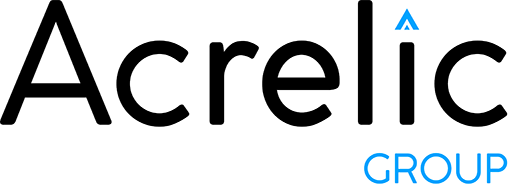

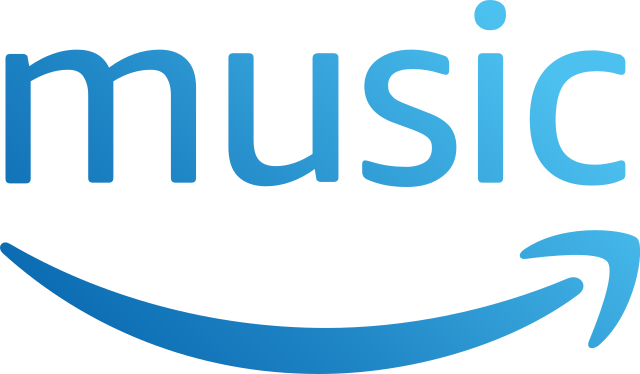




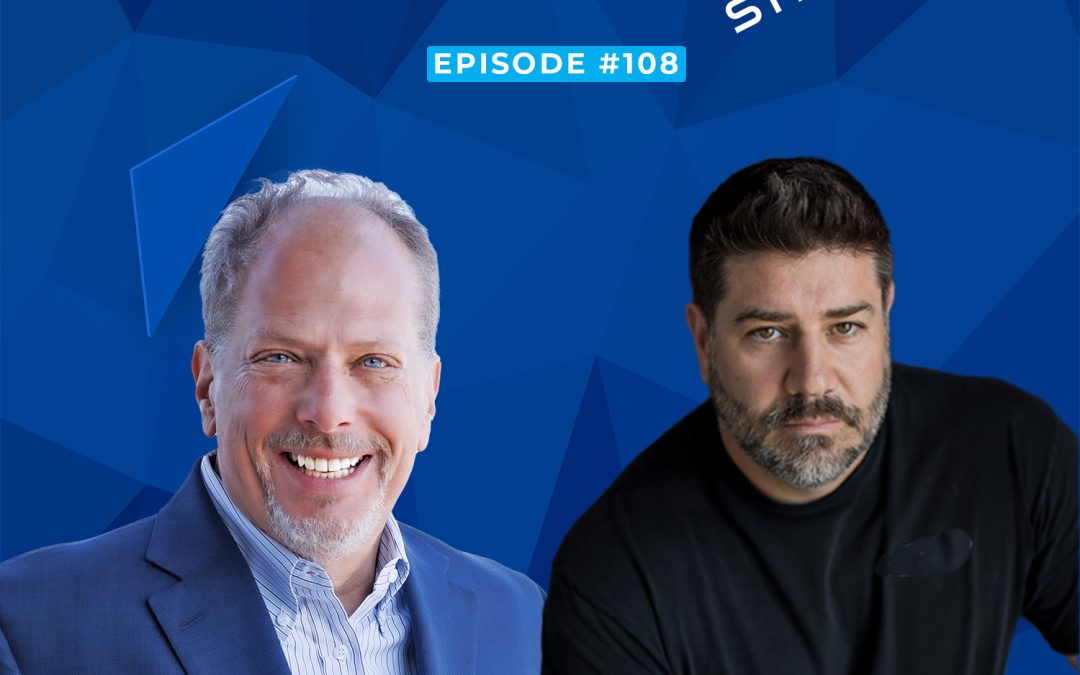
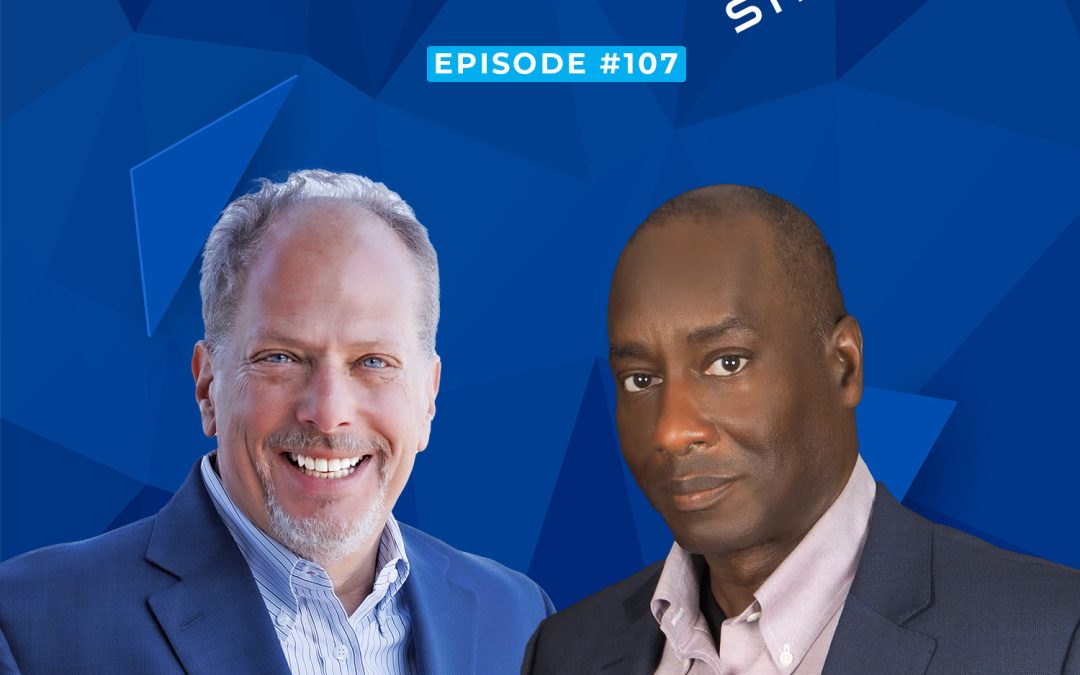

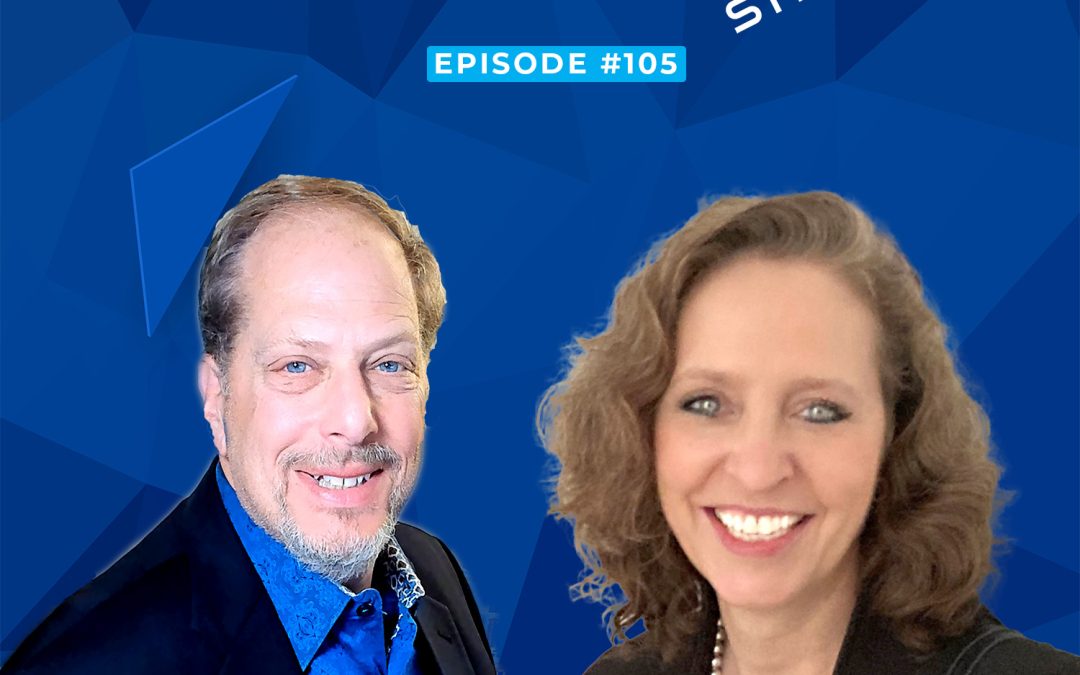

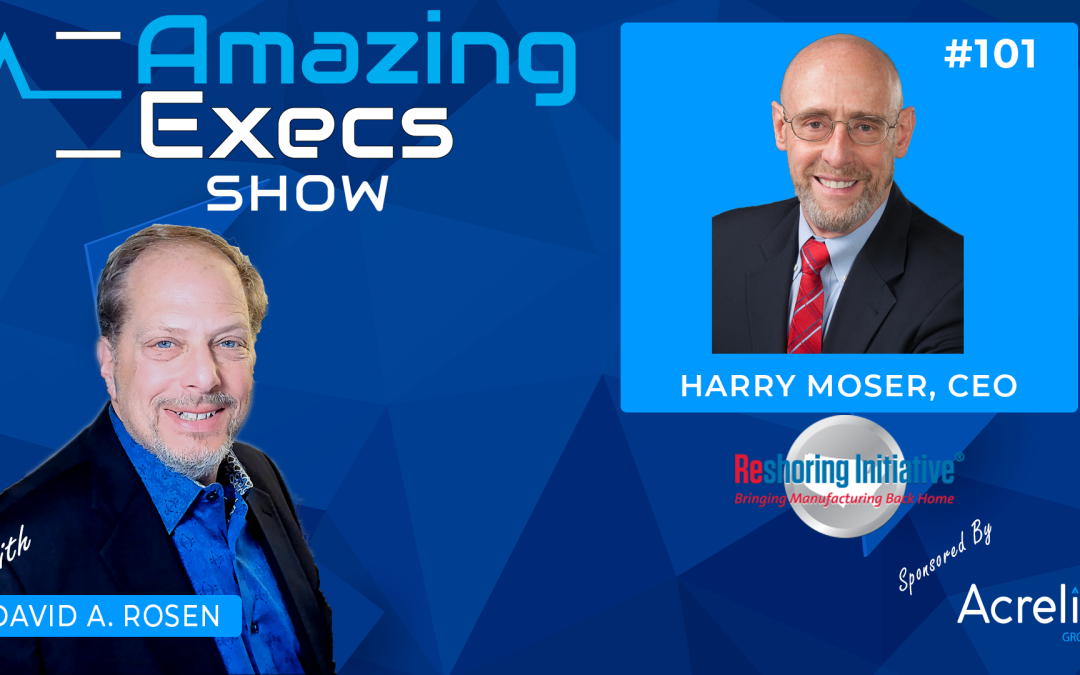
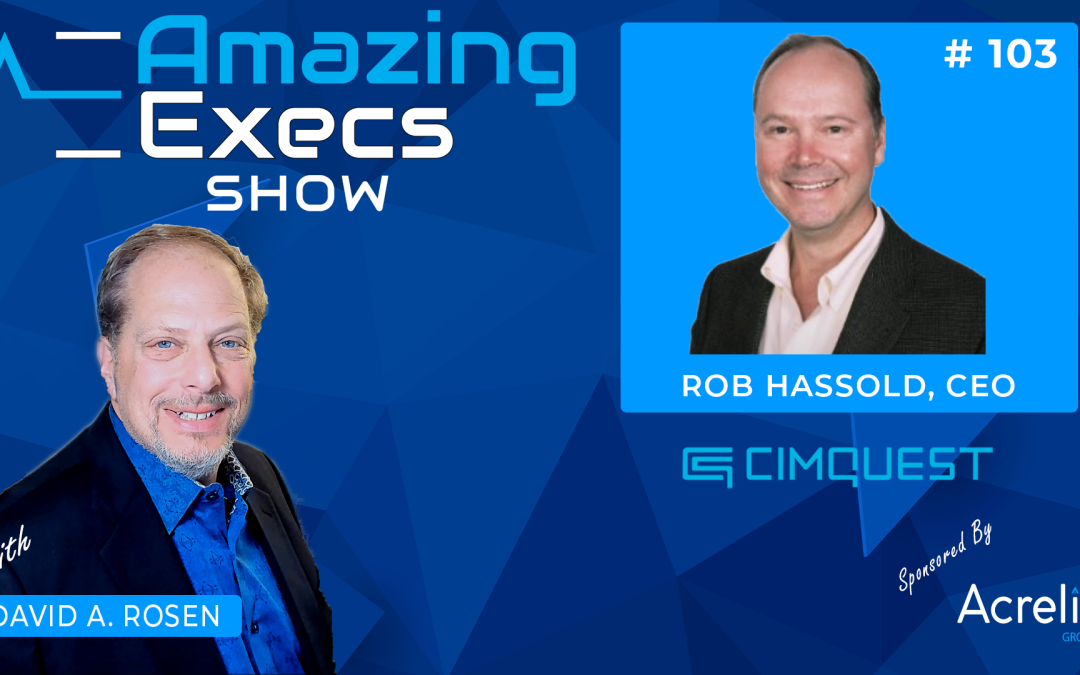
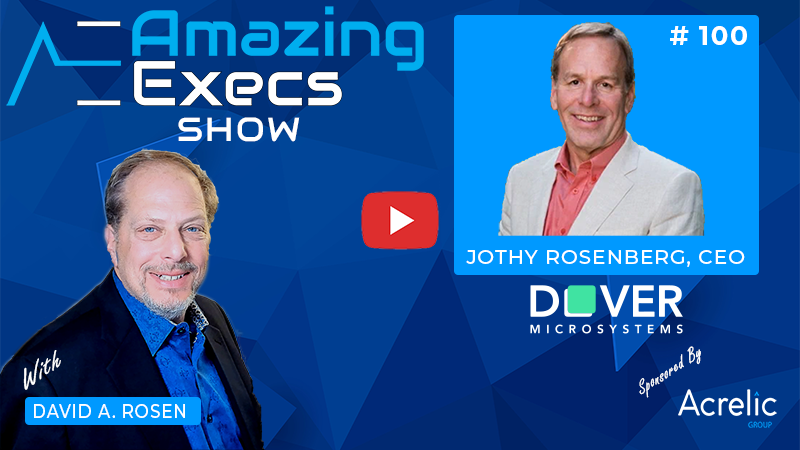
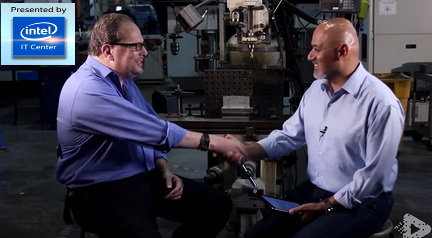
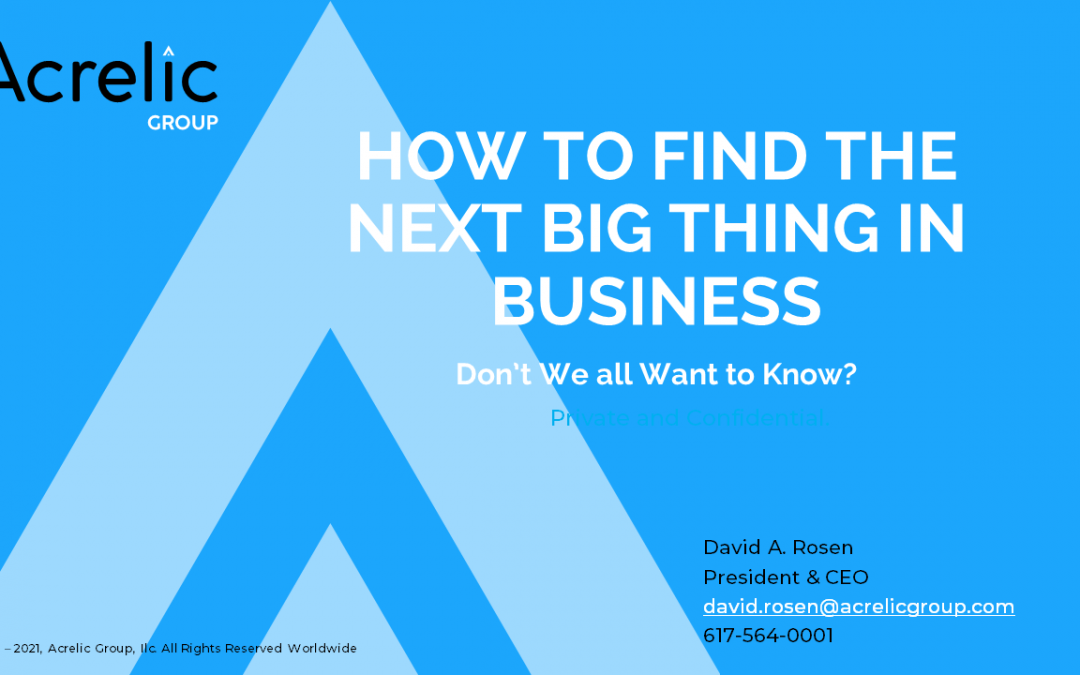
0 Comments